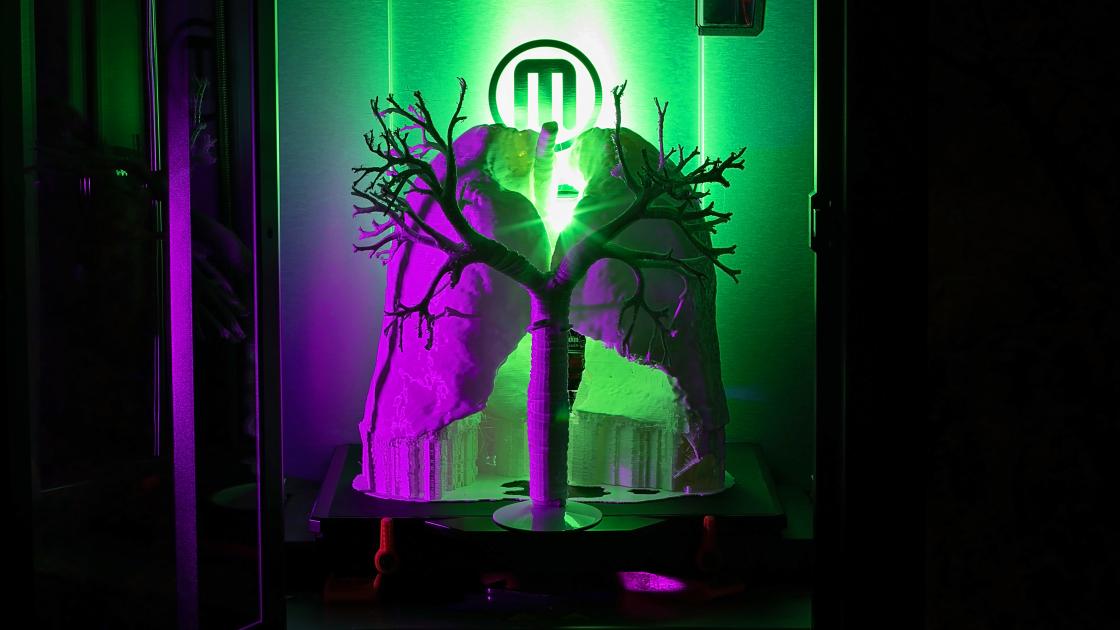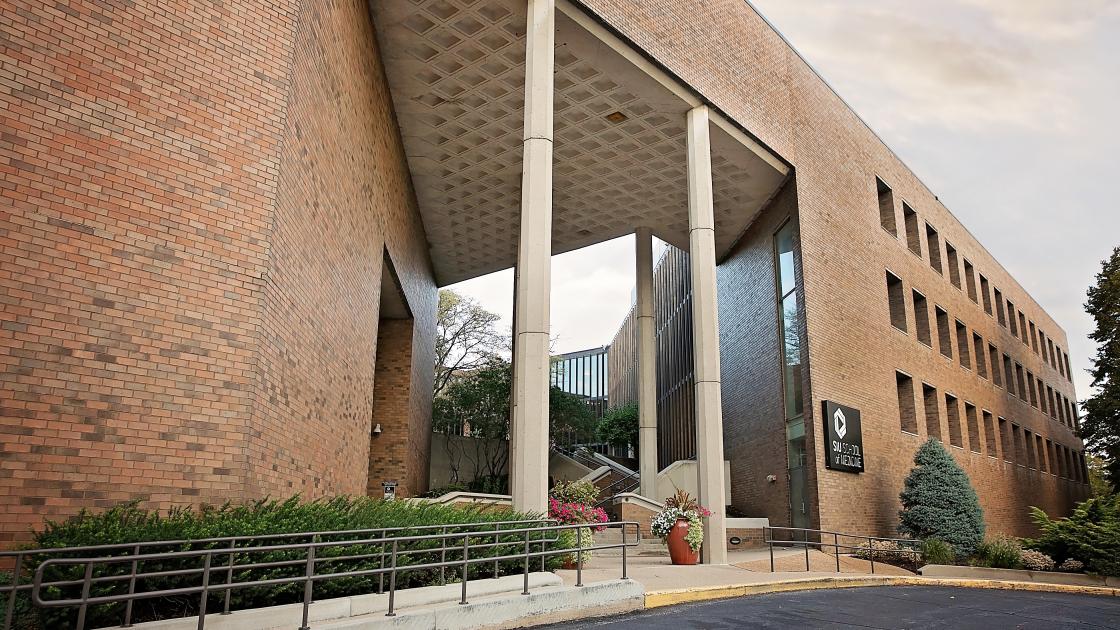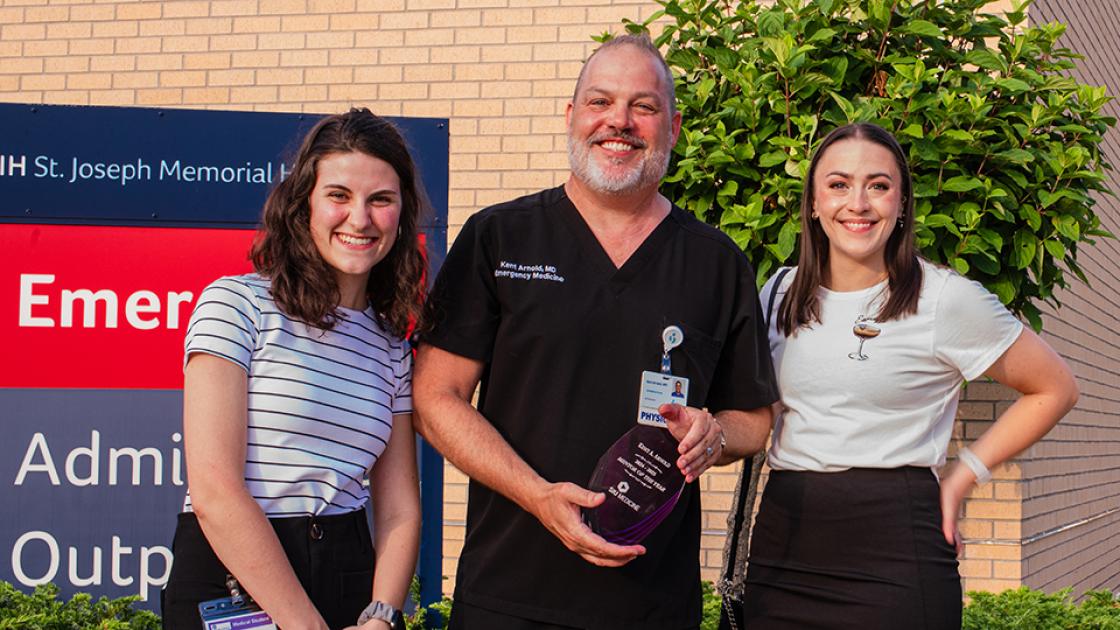
The Imagineering Lab
In 2016, orthopedic surgery resident David Tapscott, MD, approached library instructor Karli White with an unusual request. He asked if the library’s 3D printer could adequately render a model of a child’s spinal column. The physician wanted to use it to help explain a potential surgical procedure to the child’s family.
Unfortunately, the library’s small 3D printer was a loaner and could not print the life-sized model. The pair looked elsewhere and were able to find an alternative printer at the Springfield Community Makerspace.
White discussed the request with Library Director Taran Ley, who decided to draft a grant proposal to acquire a 3D printer for the Medical Library. The National Library of Medicine grant was awarded in 2018, and the $6,500 Makerbot Z18 was soon installed in the library. The library began printing the 3D items free of charge, using various colors of PLA (polylactic acid) biodegradable filament.
The use of three-dimensional models in medicine has been growing rapidly. They can help students learn anatomy, increase patients’ and families’ understanding of their medical conditions, and help physicians plan and provide personalized patient care. Studying the models can reduce surgical risk, increase efficiency and improve the success rate of difficult operations.
The 3D printer has been utilized by physicians in surgery, cardiology and clinical radiology. SIU facial plastic and reconstructive surgeon Matt Johnson, MD, has become a fan. “Previously, in preparation for surgery, we would review imaging. This can be challenging and at times, abstract to visualize. With a 3D model we have direct assessment and appreciation of anatomy. We use virtual surgical planning to prepare plates, implants, location of osteotomies [procedures altering bones], and anticipate the steps of surgery,” Johnson said.
Otolaryngology–Head and Neck Surgery can pre-bend hardware specific to the patient for the best approach to the area of repair. During surgery, the model can provide a roadmap and aids in directing dissection, which benefits both surgeon and patient. “We’re doing all these things beforehand that save time in the OR and reduces the anesthetic duration,” he said.
The Medical Library created a new designated space — dubbed the Imagineering Lab — that is anchored by the 3D printer. Located behind the main reference desk, the iLab contains the Makerbot and its printing supplies, a pair of the school’s most advanced computers, and an assortment of anatomical models.
It also has a corner spot reserved for something more ambitious: the Stratasys J750. The next generation 3D printer, the Stratasys can produce models in flexible textures, recreating skin and muscle complete with veins, arteries and occasionally, tumors. It can print several objects simultaneously and in multiple colors. The size of a large copier, “it’s a game-changer,” Ley says.
When the second printer becomes a reality, Ley said students will be able to begin training on the Makerbot to learn the basics: how to use the software, feed the printing spools, and clean the equipment and models. As residents, they can apply what they’ve learned to the more expensive Stratasys model. The library has already purchased Materialise Mimics, new software with FDA clearance to create models from CT scans and print 3D patientspecific anatomical models that can be used for diagnostic purposes. “Our plan is to offer this software as a fourth-year elective,” she said.
The library is also preparing a proposal to acquire Augmented Reality (AR) for the iLab. AR is a technology that works on computer visionbased recognition algorithms to augment sound, video, graphics and other sensor-based inputs on real world objects, using the camera of a personal device. Think of Tony Stark’s workshop in ‘Iron Man,’ or the 2016 national craze that had people hunting for digital Pokémon characters using their smartphones. The visual field requires only a light pair of sunglasses.
Ley said they hope to get Microsoft’s Hololens 2 software for the iLab, once it receives FCC approval.
Physicians and learners in the very near future will have these new tools to explore and use in consultations with peers and patients. The day nears when they can prepare for surgery by holding a replica of the target tissue in their hands or maneuver it while it literally floats before their eyes.



